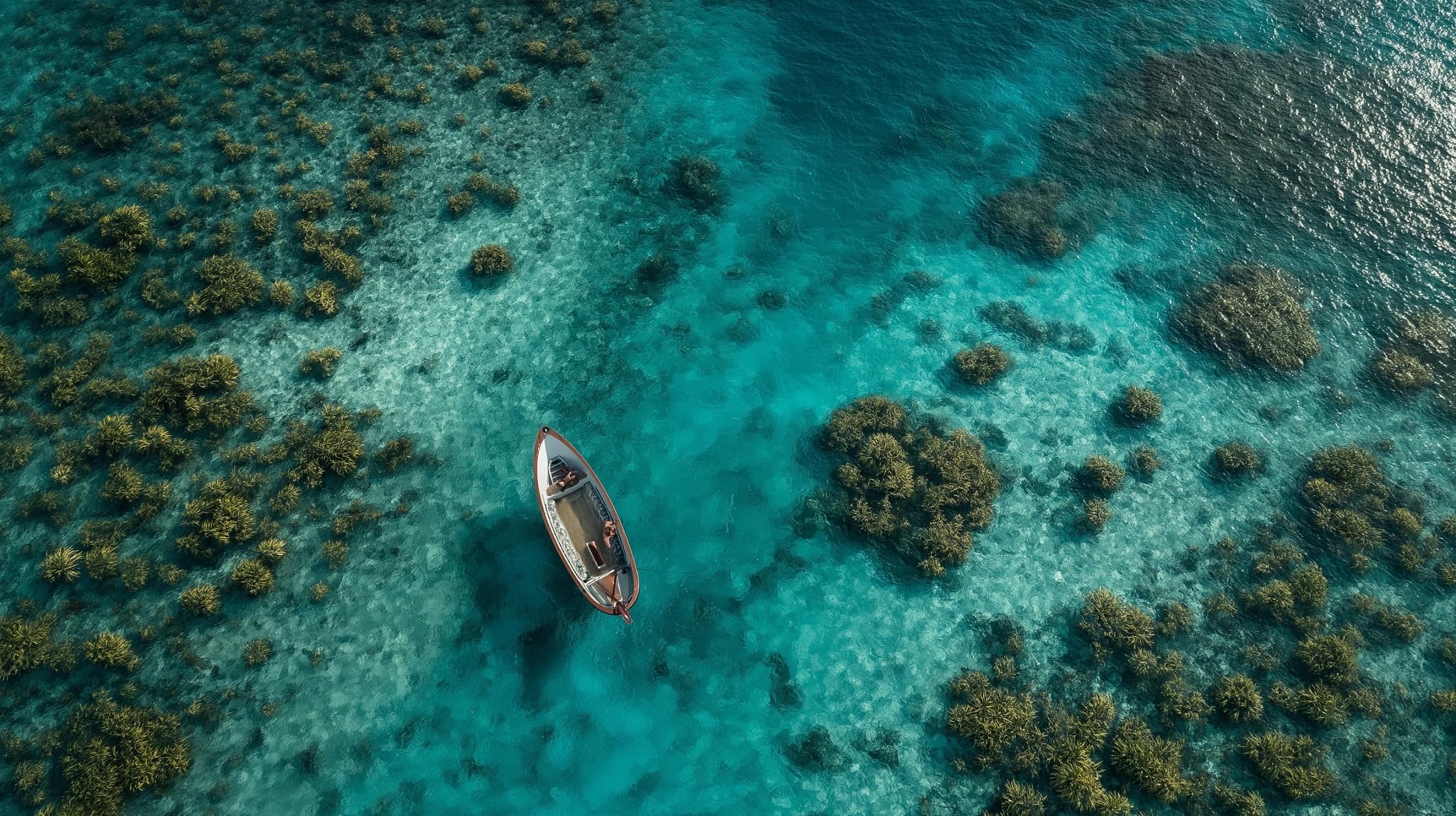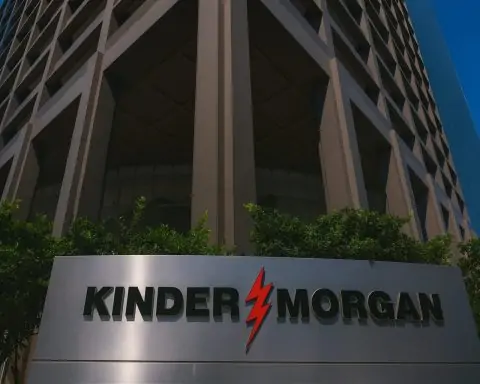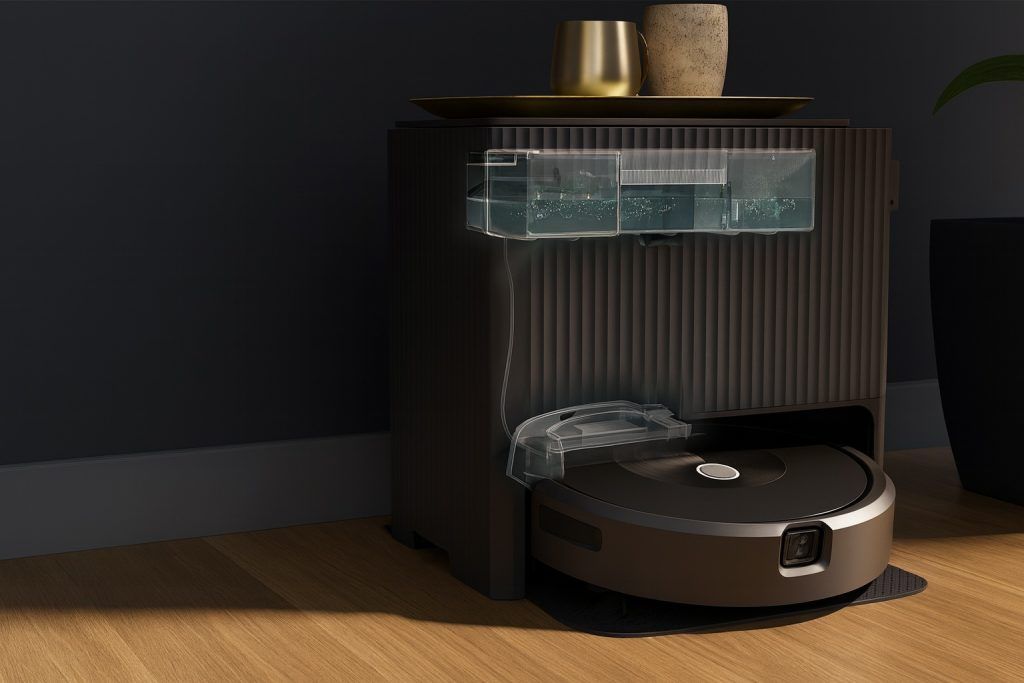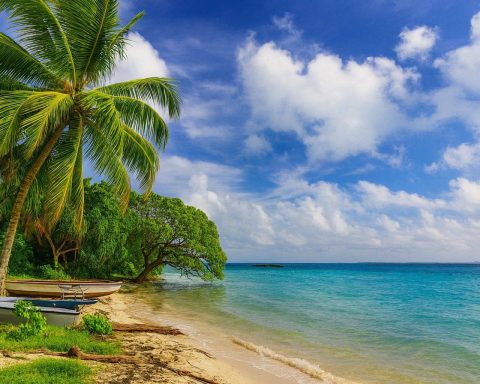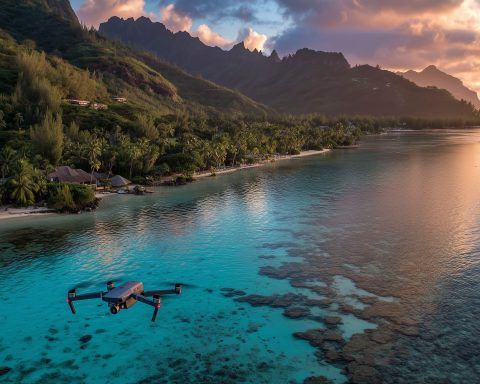- Drone use in the Maldives is allowed only on a case-by-case basis under strict regulations, with no casual recreational flights.
- The maximum permitted altitude is 120 meters (about 400 feet) and drones must yield to manned aircraft, with night flying prohibited.
- There is no mandatory local drone pilot license for hobbyists, and no mandatory insurance, though foreign visitors may be asked to show proof of competency.
- Tourists must obtain MNDF security clearance via the oneGov portal (using the eFaas system) before applying for an MCAA flight permit, providing drone specs, exact flight coordinates, dates, and passport copies; processing can take weeks, so apply 3–4 weeks in advance.
- After MNDF approval, tourists must secure an MCAA flight permit by submitting a flight plan and must carry both approvals while flying.
- Commercial drone operations require a local sponsor/agent and approval from the National Centre for the Arts (NCA) for filming, and drones must be registered with the MCAA through oneGov.
- The 2024–2025 MCAR-2 amendments codified rules including the 120 m altitude limit, mandatory registration for commercial drones, and safety buffers aligned with ICAO standards.
- No-fly zones include airports and seaplane bases, designated security zones, dense residential areas like Malé, and resort island properties where permission is required to fly.
- Violations can lead to confiscation of the drone, substantial fines (examples up to USD 5,000), legal prosecution, and potential expulsion or future entry bans.
- Since 2024, the Maldives has moved to an online permit system (oneGov) with ongoing updates in 2025, making permit processes more formal though sometimes slower; travelers should check official notices before travel.
The Maldives allows drone operations only under strict regulations and case-by-case approvals [1]. This is largely due to the country’s unique geography – 99% of its area is ocean, dotted with resort islands and over 90 seaplane platforms that support frequent low-altitude flights [2]. As a result, flying a drone in the Maldives requires careful advance planning, multiple permits, and adherence to no-fly zones to avoid safety hazards and privacy violations. The information below provides a comprehensive overview of Maldivian drone laws as of 2025, including recent regulatory updates, permit requirements for tourists and commercial operators, restricted areas, penalties, and practical tips for safe drone use.
Overview of Current Drone Regulations in the Maldives
Legal Status: Flying a drone in the Maldives is legal but tightly controlled. The Maldives Civil Aviation Authority (MCAA) considers drone operations on a case-by-case basis under strict regulations [3]. In practice, this means both recreational and commercial drone flights require official authorization in advance. There is no broad permission to fly casually; instead, each flight must be cleared through the proper channels.
Regulatory Framework: Recent amendments to the Maldives Civil Aviation Regulations (MCAR-2: Rules of the Air) specifically address unmanned aircraft. The updated rules (effective 2024–2025) emphasize airspace safety and compliance with international standards [4]. Key points include prohibitions on flying in controlled airspace, near airports, or over sensitive locations without special approval [5], a maximum altitude limit of 120 meters (≈400 feet) above ground [6] [7], and requirements for identifying and registering drones (especially for commercial use) [8]. Night flying is not allowed, as operations are restricted to daylight hours in good weather [9]. Also, drones must always yield to manned aircraft like seaplanes. In summary, while drones can be flown in Maldives, it is under a tightly regulated regime designed to protect privacy, security, and the busy low-level air traffic.
No Blanket License Requirement: The Maldives does not (yet) mandate a formal drone pilot license for hobbyists or private drone operators, and no local certification is required for basic drone use [10] [11]. However, foreign visitors may be asked to show proof of competency (such as a drone license or training certification from their home country) when applying for permits [12]. This is not a formal law but a practical expectation to ensure that visiting pilots understand drone safety. There is also no mandatory insurance requirement under Maldivian law for recreational or commercial drone flights [13] [14]. That said, carrying liability insurance is strongly recommended for any drone operation given the potential risks (especially for commercial projects).
Permit Requirements for Tourists (Recreational Drone Use)
Tourists wishing to fly drones recreationally in the Maldives must navigate a multi-step permit process involving both military and civil aviation authorities:
- 1. Permission from Local Authorities/Property Owners: First, obtain approval from the relevant local authority or property owner for the area you plan to fly [15] [16]. For example, if you’re staying at a resort island, you must ask the resort management for permission to fly there. Many resorts have strict no-drone policies to protect guest privacy, so do not assume you can fly without asking [17]. If you are on a local inhabited island, check with the Island Council for permission. Essentially, you need the site owner’s consent before proceeding further.
- 2. Maldives National Defence Force (MNDF) Permit: All drone flights require security clearance from the government. Tourists must apply to the Ministry of Defence / MNDF for a drone operation permit [18]. As of 2024, this process has been streamlined through the government’s online portal (oneGov). You will need to create an account via the eFaas system (the national e-services login) and then submit a drone permit application on one.gov.mv [19] [20]. The application will ask for details such as your drone’s specifications, a map of the exact flight area (coordinates), the dates/times of operation, and copies of your passport (for identification) [21]. If flying as a tourist for personal photography, you should classify the purpose as recreational. Submit the application well in advance – although officials have stated that properly filed requests might be processed in as little as 3 working days [22], in practice approvals often take much longer (several weeks have been reported) due to the need to coordinate with various authorities [23] [24]. It’s safest to apply 3–4 weeks before your trip to ensure you have the MNDF permit in hand when you arrive.
- 3. Maldives Civil Aviation Authority (MCAA) Flight Permit: After obtaining the MNDF’s security clearance, you must then apply for a flight authorization from the Civil Aviation Authority [25]. This is essentially the aviation regulator’s permit to ensure your drone operation will not interfere with air traffic. The MCAA requires you to fill out a form detailing your flight plan (location, altitude, dates, drone model, etc.) and submit it along with a copy of the MNDF’s approval letter. The form can be downloaded from the CAA website and is typically emailed to the CAA (Air Navigation Services section) at ans@caa.gov.mv [26] [27]. The CAA will review factors like proximity to airports or seaplane routes. As a rule, drones must be flown below 400 feet (120 m) altitude at all times [28]. The CAA permit, once granted, will specify the conditions and limitations of your flight. It’s advisable to carry both the MNDF and MCAA approval documents (printed or on your device) while flying, in case you need to show them to authorities.
- 4. (If applicable) Other Permissions: Depending on your location and purpose, you may need additional approvals. For instance, if flying in or near an airport zone, you would coordinate with the Maldives Airports Company Ltd (MACL) [29]. If flying over a heritage site or an event, you might need permission from the relevant body (the National Centre for the Arts (NCA) handles permits for certain filming activities, see commercial section below). These are generally not needed for a typical tourist taking personal videos on resort premises, but the responsibility is on the drone operator to ensure no local laws or rules are broken [30].
No-Fly Considerations for Tourists: For recreational users, understanding where not to fly is critical. All military or security zones are strictly off-limits – your MNDF permit will not be granted if you propose flying anywhere near a designated security-sensitive area, and you are prohibited from taking photos/videos of security zones [31]. Flying near airports or seaplane waterways is also forbidden unless explicitly authorized; the Maldives has many small airports and seaplane landing corridors, so tourists must be careful to stay well away from any aircraft operations [32]. It’s best to stick to your approved location and avoid straying; one guideline suggests maintaining at least a 50-meter distance from any people or buildings in inhabited areas, and keeping a radius of 150 meters over open water so that you don’t encroach on boat lanes or neighboring islands [33]. Always yield to seaplanes and helicopters – if you see or hear one approaching, immediately descend and land your drone.
Resort Policies: Note that even with MNDF/MCAA permits, private resort islands may impose their own bans on drones for privacy and safety. Always check your resort’s policy in advance. Some resorts outright prohibit drones and may confiscate them or impose fines if you launch one without permission [34]. If a resort does allow drones, they might restrict flying to certain times or areas (for example, not over water villas or beach areas where guests expect privacy, and not during busy seaplane landing hours). Tip: Coordinate with resort staff – they can advise when/where it’s safest to fly so as not to conflict with seaplane schedules (often seaplanes operate heavily in daylight hours).
Timeline & Fees: Currently, there is no government fee to apply for a drone permit – the applications through oneGov and to MCAA are free of charge. The main “cost” is the time and effort. Because processing can be slow, start early. The Ministry of Defence has directed applicants to submit requests at least 3 days before the flight (excluding holidays) [35], but realistically for foreign tourists it’s wise to apply a few weeks in advance [36]. If you haven’t received approval by the time you travel, it may be best to refrain from flying until you can get the proper permits. Do not attempt to fly “under the radar” – authorities have been increasingly vigilant about unregistered drones.
Commercial Drone Regulations (Professional Use in Maldives)
Commercial drone operations in the Maldives are subject to additional requirements beyond those for tourists. “Commercial” typically means any drone use for business, media production, or paid work – for example, filming a tourism advertisement, conducting aerial surveys, or photography/videography services for clients. Such activities require all the permits above plus some extra steps:
- Local Sponsorship & NCA Approval: Foreign companies or individuals intending to film or conduct commercial drone work must work with a local partner or agent. The Maldives’ National Centre for the Arts (NCA) is the authority that grants filming permissions for foreign productions. Commercial drone use for videography (e.g. making a documentary, commercial, or feature film) requires NCA’s approval at least 10 working days before arrival [37]. Applicants need to submit detailed information to NCA, including a filming permit application form, a letter naming a local agent (with their ID), details of the project (script or synopsis, filming locations and dates, purpose of the film), and a list of all equipment (drones, cameras, etc.) being brought in [38] [39]. The NCA coordinates with other agencies as needed and issues a filming permit if approved. A local agent from the Maldives must accompany the film crew to ensure compliance with local rules [40] [41]. This process is aimed at larger scale productions; if you are a solo commercial drone operator (e.g. hired to film a wedding at a resort), you should still obtain a relevant business visa and any required filming permission from the resort/NCA, but the process may be simpler than a full film production. Always clarify with NCA and your local contact.
- Registration of Drone & Special Permits: Under the latest regulations, commercial operators must register their drones with the MCAA [42]. This goes beyond the one-time flight authorization – it means providing the CAA with your drone’s details (make, model, serial number) and possibly obtaining a registration ID or certificate for the drone. The oneGov platform introduced in 2024 facilitates drone registration for all users (including companies) in a unified system [43] [44]. If you are a Maldivian business using drones, ensure each drone is registered with MCAA. For foreign commercial operators, coordination with a local entity or the CAA is needed to register any drone you bring into the country for the duration of your project.
- Commercial Flight Permits: Just like tourists, commercial pilots need the MNDF permit and the MCAA flight permit for each operation [45] [46]. The difference is that for commercial missions you must explicitly declare the purpose (e.g. “professional aerial photography for X resort marketing video”) and often you will be held to higher scrutiny. You might be asked for additional documentation, such as proof of your drone pilot qualifications (many operators include a copy of any certification or license they hold, even if not officially required) or proof of insurance coverage. Drone insurance is not legally mandated in Maldives [47], but commercial operators are strongly encouraged to carry adequate insurance given the higher risks and liabilities involved in professional work.
- Airspace and Operational Rules: Commercial drones are generally subject to the same flight rules as recreational: maximum 120 m altitude, daylight only, within visual line of sight, no flying over crowds, etc. However, commercial operations sometimes require going into areas or scenarios that recreational pilots wouldn’t. For example, you might need to fly near an airport for an infrastructure inspection, or at night for a supervised event – such cases would require “special authorization” explicitly spelled out in your permit [48]. The CAA can issue waivers or special permits for restricted airspace or night operations if justified, but expect strict conditions. Generally, near airports or sensitive sites, drones are prohibited without special permission [49], so commercial operators should plan missions away from such zones or coordinate well ahead with authorities.
- Licensing: Maldives does not yet have a local “Remote Pilot License” system, so there is no Maldivian drone pilot license you must obtain [50]. Both Maldivian nationals and foreign commercial pilots can operate with the above permits. That said, foreign commercial operators should ensure compliance with any licensing requirements of their home country (for example, a European operator should have an EU drone certificate if required at home), as Maldivian authorities may expect professional operators to be qualified. Government agencies operating drones (like police or military) do have their own training and licensing internally, but that doesn’t apply to civilian flyers.
- Compliance and Oversight: Commercial drone activities may attract more scrutiny. Authorities might perform inspections of your operation. You are expected to follow strict safety procedures – maintaining safe distances from people and property, having a spotter if needed, and following any additional guidelines in your permit. For instance, your MNDF permit will state that you must abide by all laws and regulations and respect local customs, and that an MNDF officer or law enforcement could halt your operation if necessary [51]. Make sure your team is aware of these conditions. If your project involves filming culturally or politically sensitive sites, obtain all extra permissions (e.g. permits for specific locations, consent of people being filmed, etc.) [52]. The bottom line is that commercial drone use is feasible in Maldives, but it requires thorough paperwork and respect for the rules.
Summary of Permit Requirements: Tourists vs. Commercial Operators
The table below compares key requirements for recreational tourist drone users and commercial drone operators in the Maldives:
| Requirement | Tourist / Recreational | Commercial Operator |
|---|---|---|
| Local Permission (property or island) | Yes – e.g. Resort or Island Council approval needed before flying [53]. Many resorts ban drones, so always confirm in advance [54]. | Yes – if filming, need location owner’s permission. Foreign film crews must have a local Maldivian agent and inform regional authorities of locations [55] [56]. |
| MNDF/Defence Permit | Yes – Apply via oneGov platform or Ministry of Defence at least a few days (preferably weeks) in advance [57] [58]. Provide flight details (coords, time) for case-by-case approval. | Yes – Same MNDF permit required. Can be applied concurrently with any local permissions [59]. Must declare commercial purpose; may require additional justification or security scrutiny. |
| MCAA Flight Permit | Yes – After MNDF clearance, submit flight permit form to Civil Aviation (CAA) with details of operation and MNDF approval attached [60]. Altitude capped at 120 m AGL [61]. | Yes – MCAA permit required for each operation. Drone must be flown under 120 m unless special waiver granted. Commercial ops might need to specify pilot qualifications and safety measures. |
| Drone Registration with CAA | Case-by-case – Permits serve as authorization. No separate registration ID for hobby drones, but all flights must be authorized. | Yes – Required. Commercial drones should be registered with MCAA (providing drone specifications/serial) as per new regulations [62]. Each drone in fleet needs registration; keep proof of registration. |
| Drone Pilot License | Not required by Maldives. Basic experience expected but no local license. Foreign tourists aren’t required to hold a license, though having one (e.g. from home country) is recommended [63]. | Not required (no local licensing system). However, professional operators should be certified/trained. Certain operations (e.g. government drones) require licensed pilots internally [64]. |
| Insurance | Not legally required for recreational flights [65]. It’s advisable to have liability insurance, but many tourists fly uninsured at their own risk. | Not mandated by law [66], but strongly recommended. Many clients or authorities will expect proof of adequate insurance for commercial projects. |
| No-Fly Zones Compliance | Must avoid airports, seaplane lanes, military/security areas, and crowds [67]. Use common sense – if unsure, don’t fly. Typically only fly in the specific area you got permitted. | Same restrictions: prohibited in controlled airspace or sensitive locations without explicit special authorization [68]. Commercial operators may apply for waivers for certain restricted zones (case-by-case). |
| Penalties for Violations | Fines, drone confiscation, or other legal action if caught flying without proper permits. (Authorities have issued warnings about strict action against unauthorized hobby flights [69].) | Similar penalties, potentially higher consequences if a commercial operator violates rules. Could face heavy fines, cancellation of permits, and liability for any damage caused. Serious violations (e.g. endangering aircraft) can lead to prosecution. |
No-Fly Zones and Restricted Areas in the Maldives
The Maldives enforces numerous no-fly zones to protect sensitive areas and ensure aviation safety. Before flying anywhere, be absolutely certain your chosen location is not in a prohibited zone. Key restricted areas include:
- Airports and Seaplane Bases: All airports have a strict no-drone zone around them. This includes Velana International Airport in Malé and all domestic airports on other atolls. Additionally, the many seaplane water aerodromes (usually adjacent to resort islands or scattered platforms in lagoons) are considered aviation facilities – drones cannot fly near them without special permission. A good rule of thumb is to stay many kilometers away from any airport. The exact distance is not publicly stated, but controlled airspace around airports is off-limits unless explicitly authorized by MCAA [70]. Given the Maldives’ geography, many islands are close to some kind of air operation, so careful checking is needed. For seaplanes, coordinate with resort staff on timing; for example, you might fly during a window when no seaplanes are scheduled to land.
- Military and Government Security Zones: Areas designated as Security Zones by the MNDF are prohibited for drone flights and even drone photography [71]. These likely include military installations (e.g. MNDF bases, Coast Guard stations), the vicinity of the Presidential residences or government buildings in Malé, and possibly critical infrastructure (like power plants or communications hubs). The Ministry of Defence does not publicize all security zones for obvious reasons, so the onus is on applicants to avoid sensitive locations in their permit requests. A notable example: during national events (like Independence Day celebrations), authorities have temporarily banned drones over certain areas for security [72]. Always heed any public notices of drone bans. When in doubt, assume government buildings and police/military facilities are no-fly areas.
- Residential Areas and Public Gatherings: Flying over people or dense urban areas is not allowed. Malé, the capital city, is one of the most densely populated places in the world – drones are generally not permitted there without special government consent, due to privacy and safety concerns. Even over smaller local islands, you should maintain a safe distance (50+ meters) from any people not involved in the drone operation [73] [74]. Do not fly over crowds, beaches with sunbathers, or schools/hospitals. Privacy is taken seriously; unwelcome drone filming can be viewed as an invasion of privacy and cause complaints.
- Resort Islands: While not “government-declared” no-fly zones, most resorts have policies that ban or restrict drones on their property [75]. The entire island of a resort is private property, so you need their permission. Many high-end resorts prohibit guest drones outright to ensure exclusive privacy for guests. Others might allow drones during certain hours or at specific locations (e.g. only over the ocean side, away from villas). If a resort bans drones and you fly anyway, they can take action such as confiscating the drone or fining you (some resorts have reportedly imposed fines up to USD $5,000 for violations of their drone policy) [76]. Always check in advance and respect the resort’s rules – even if you have government permits, the resort can deny you permission on their premises.
- Environmentally Sensitive Areas: The Maldives is home to protected marine areas, bird nesting islands, and other ecological sites. There aren’t specific published rules about drones in these areas, but as a best practice do not disturb wildlife with your drone. For example, if an island is known as a bird sanctuary or turtle nesting beach, avoid flying there, especially at low altitudes that could harass animals. The new regulations mention avoiding actions harmful to flora and fauna as part of permit conditions [77]. Use common sense: loud drones can stress wildlife.
- Security & Privacy Zones: As noted, any place that could “cause concern among local authorities” should be avoided [78]. This broad guideline includes things like police checkpoints, prisons, international embassy compounds in Malé, or critical infrastructure like communication towers or utilities. Even if not officially listed, flying near such locations will likely attract immediate intervention. Also, never fly near other people’s private villas or residences without permission – privacy laws can be invoked if you record people without consent.
In summary, the safe zones to fly are very limited in Maldives. Typically, if you have all your permits, you will be flying over a specific resort beach, an uninhabited sandbank, or a designated area where you’ve arranged permissions. Always stick to the coordinates and altitude limits given in your permit. The Maldivian government has explicitly urged drone users to follow these restrictions to prevent accidents with aircraft and to avoid legal trouble [79].
Penalties for Violating Drone Laws
Flying a drone without the proper permits or in restricted areas is a serious offense in the Maldives. The authorities have adopted a zero-tolerance stance on unauthorized drone operations, especially after incidents in 2023–2024 where drones were spotted in sensitive areas (like near airports and military sites) without permission [80]. If you violate the drone regulations, you could face several consequences:
- Drone Confiscation: Enforcement officers (police or MNDF) may confiscate your drone on the spot if you are found flying without authorization. The drone and its memory cards could be held as evidence. There is no guarantee you’d get it back quickly (or at all, in some cases).
- Fines: Violators are typically subject to significant fines. While the exact fine amount can depend on the severity of the violation and under which law you are charged, reports suggest they can be steep – for example, one resort warned of a $5,000 fine for drone policy violations [81]. Government-imposed fines could vary; if your action endangered an aircraft, the penalty could be much higher, potentially reaching tens of thousands of Rufiyaa. These fines can be levied under civil aviation regulations or public safety laws.
- Legal Prosecution: In egregious cases (such as flying a drone that interferes with a seaplane or poses a security threat), you could face criminal charges. The Civil Aviation Act and regulations provide for prosecution of those who endanger aircraft or violate airspace rules. This could lead to court proceedings, and if convicted, penalties might include hefty fines or even imprisonment. At the very least, you would likely be expelled from the country and banned from future entry for such serious breaches.
- Warning and Blacklisting: The first response to minor infractions might be a stern warning. However, the Ministry of Defence announced in 2024 that it would take “strict actions” against those failing to comply with permit requirements [82]. This indicates that even first-time offenders should not expect leniency. Your name could be recorded by authorities, and future permit applications might be denied if you’ve flouted rules before.
- Other Liabilities: If your drone causes injury or property damage, you are liable for those damages under Maldivian law. For instance, if a drone crash causes injury to someone, you could be sued or charged. Without insurance, you would be personally responsible for all costs. Also, if you took pictures in violation of privacy or security laws, you might have to surrender or destroy such footage and could face separate penalties under privacy statutes.
In all cases, prevention is far better than dealing with penalties. The Maldivian government wants to avoid unauthorized drones entirely, hence the requirement to get permits. As the Defence Ministry’s warnings illustrate, they are prepared to enforce the rules rigorously [83]. For travelers, this means you should never “risk it” for a quick drone shot – the turquoise lagoons might be tempting, but the law comes first. Always go through the official permit process. If you don’t have time or approval, it’s not worth the gamble: enjoy the view from the ground or use alternative photography methods.
Recent Updates and Changes (2024–2025)
Drone regulations in the Maldives have evolved in the last two years, with authorities updating rules to address the surge in drone usage:
- 2024 – Introduction of Online Permit System: In early 2024, the Maldives government moved the drone permit application process to the oneGov online portal to streamline approvals [84]. This replaced or supplemented the older method of emailing forms. Users (including tourists) now register via the eFaas system and apply digitally, which in theory speeds up processing (the Defence Ministry indicated permit requests could be processed in about 3 working days if submitted correctly [85]). This was a significant change, making it easier to apply from abroad. However, practical reports indicate that while the portal is helpful, approvals can still take time and sometimes require follow-ups [86]. The oneGov system also unified drone and flight registration, meaning the same portal handles both the MNDF security approval and the basic drone registration with CAA.
- 2024 – Enforcement Push: In mid-2024, following incidents of rogue drone flights, the government launched a campaign to raise awareness and enforce rules. In May 2024, the Ministry of Defence issued a stern public warning about unauthorized drones, noting that drones had been flown in “military security zones and near airports” despite prior advisories [87]. They urged the public to always obtain permits and warned of strict measures against violators. This likely corresponded with increased monitoring; for example, law enforcement might use drone detectors around sensitive sites. Travelers in late 2024 reported that some resorts and airports were more vigilant in asking if incoming guests had drones and checking for permits.
- Late 2024/Early 2025 – MCAR-2 Amendments: The Maldives Civil Aviation Authority updated the Maldives Civil Aviation Regulations – MCAR-2 (Rules of the Air) to include new UAV provisions [88]. Announced formally by 2025, these amendments codified many of the previously ad-hoc rules. Notably:
- Explicit Altitude and Airspace Restrictions: Maximum drone altitude was set (120 m) and drones are explicitly forbidden in controlled airspace without clearance [89].
- Mandatory Registration for Commercial Drones: Commercial operators now must register each drone with the MCAA and obtain special operating permits for any restricted zone work [90].
- Safety Buffer Requirements: Though not all details are public, operators are required to maintain safe distances from people, property, and infrastructure, aligning with ICAO-recommended practices [91].
- Alignment with International Standards: The rules were adjusted in line with ICAO and other countries’ standards, meaning Maldivian rules now more closely resemble what you might find in Europe or North America in terms of requiring authorization, responsibility of the operator, etc. [92].
- 2025 – Ongoing Updates: As of August 2025, the MCAA and MNDF continue to fine-tune drone policies. The news media in Maldives reported the government’s intent to enhance airspace safety with these stricter UAV rules [93]. It’s advisable for drone users to check the MCAA’s official website and notices just before traveling, as minor rule changes (such as updated permit forms, new no-fly zones, or additional requirements) can be introduced. For example, if Maldives were to require remote ID or introduce a pilot competency exam in late 2025, that would be announced through official channels.
In summary, the trend from 2024 into 2025 is toward tighter control and formalization of drone operations in the Maldives. What used to be a purely case-by-case informal permission has become an organized process with online applications and published rules. This is good for clarity – it means as a drone pilot you know what is expected – but it also means there is less leeway for spontaneous flying. Keep abreast of the latest by consulting MCAA releases or reaching out to them directly before your trip.
Key Regulatory Bodies and Contact Information
Anyone considering flying a drone in the Maldives should be aware of the main authorities involved and how to contact them for information or permit applications:
- Maldives Civil Aviation Authority (MCAA): The MCAA is the aviation regulator overseeing drone usage. They issue the flight permits and set rules like altitude limits and operational guidelines. Contact: [email protected] (Air Navigation Services Dept.) [94], Phone: +960 332 4983 [95]. The MCAA website (caa.gov.mv) provides forms and information on regulations. Their office is in Malé (2nd Floor, Velaanaage, Ameer Ahmed Magu). Drone pilots can email or call with questions – they encourage inquiries from foreign visitors to clarify rules [96].
- Ministry of Defence / Maldives National Defence Force (MNDF): The Defence Ministry (through MNDF) handles the security approval for drones. All drone operators must get MNDF’s permit as the first step. Contact: Applications are now via the oneGov portal, but for queries you may email [email protected] or [email protected] (as listed on forms) [97]. The MNDF has the authority to enforce no-fly zones and respond to drone-related security issues. They might not have a public-facing team for drone queries, so most interactions are via the permit process itself.
- National Centre for the Arts (NCA): The NCA is relevant mainly for commercial film-makers and photographers. They issue filming permits to foreign entities and ensure cultural and content guidelines are followed. Contact: [email protected], Phone: +960 331 3456 [98]. Their office is in Malé. If you’re doing any kind of professional filming (advertisement, documentary, etc.), reach out to NCA for guidance well ahead of time.
- Local Councils / Resort Management: On the micro level, the local Island Council (for inhabited islands) or resort management (for resort islands) acts as an “authority” that must grant you permission to take off/land on their premises. Contacts vary by island. If you’re staying on a local island, you can find the council office and ask directly or have a local host arrange it. Resorts typically inform guests in welcome materials or via front-desk if drones are allowed or not. Always communicate with them before flying; they have the right to stop you if you don’t.
- Maldives Airports Company Ltd (MACL): MACL manages major airports (like Velana International). If your drone flight is anywhere near an airport (which is generally not allowed), MACL would be involved. It’s unlikely a tourist or standard operator would contact MACL directly, as you would instead coordinate through CAA, but just know that MACL’s Air Traffic Control will be aware of any drone permissions near airports. The CAA will forward your info to ATC if needed.
- Law Enforcement: The Maldives Police Service and airport security are increasingly involved in monitoring illegal drone use. They don’t have a specific drone unit publicly, but if you have an incident (like someone confiscates your drone or you want to report a misuse), you would contact the local police. Tourist Police (reachable at +960 979 0070) can also assist tourists in understanding local laws [99].
It’s wise to keep contact info handy. For example, having the CAA email and your permit reference number available can help if someone (say a resort security staff or a police officer) questions your drone activity – you can quickly direct them to the relevant authority to verify your permit. When in doubt about any rule, contacting the MCAA is your best bet; they can clarify what is allowed and what is not.
Practical Tips for Safe and Legal Drone Use in the Maldives
Flying a drone in the Maldives can be incredibly rewarding – the aerial views of turquoise lagoons and coral atolls are breathtaking. But the process requires caution and preparation. Here are some practical tips to ensure you stay safe and legal:
- Apply Early and Follow Up: Begin the permit application process well before your trip. Use the oneGov portal to submit your request with all required documents. If you don’t hear back within the expected time (e.g. a week), consider politely following up via email with the CAA or MNDF. Keep copies of all application materials. Bureaucracies can be slow, so patience and persistence are key.
- Carry Permit Documents While Traveling: When packing for your trip, include printed copies (or at least digital copies on your phone/tablet) of your MNDF permit approval email and your MCAA flight permit. Also have any resort permission emails or letters. At airport customs in Malé, officers may ask if you have a drone. Be honest – show your permits if requested. Having the paperwork handy can smooth things if they question you. Some travelers have been asked at resort check-in about drone permits; it helps to have proof that you went through the proper channels.
- Respect No-Fly Zones Rigidly: Once on the islands, strictly respect all the no-fly zone rules. Use apps or maps to identify your distance from airports – e.g., Velana International (MLE) has a radius where you shouldn’t fly on Hulhumalé or nearby. If you’re on a resort near a domestic airport, assume you cannot fly there without special permission. Also, if the MNDF or CAA permit specified any boundaries or conditions, adhere to them exactly. Do not be tempted to “sneak” a flight in a prohibited area (for instance, a quick drone launch in Malé city – this is very likely to be spotted and result in confiscation given the security presence there).
- Fly During Safe Windows: Always fly in good weather and daylight [100]. Maldives can have sudden squalls, especially in monsoon season (May–Nov). Avoid flying in strong winds or rain – besides being unsafe, an errant drone could be interpreted as loss of control and cause alarm. Also, time your flights to avoid conflict with seaplanes: midday often has a lot of seaplane transfers. Early morning or late afternoon (before sunset) might have fewer flights, but check with resort staff. Even with permission, if a seaplane is approaching, land immediately. Safety is paramount.
- Keep Line of Sight & Stay Low: Do not fly beyond your visual line of sight (this is part of the regulation and general safe practice). Given the 120 m altitude limit, there’s no need to go higher – you’ll get stunning shots even at 60–100 m. In fact, staying well below 120 m is smart near seaplane zones. Some operators stay under ~60 m (200 feet) as an extra buffer. Over water, remember drones can look closer than they are – ensure you can judge distance to any other island or boat traffic.
- Be Mindful of Privacy: If you’re flying near any people, ask permission if possible or at least announce your intention. Maldivians are generally friendly, but drone noise can be seen as intrusive. If on a local island beach and families are around, it’s polite to ask if they’re okay with you taking a quick aerial shot. For resorts, never fly over private villas or pools where guests expect seclusion. One good practice is to aim your camera away from people – focus on landscapes unless you specifically have consent to film individuals.
- Use Drone Return-to-Home Judiciously: Make sure your drone’s GPS home point is set correctly (e.g. take off from an open area). Because many islands are small, a drone RTH from a high altitude could violate airspace or go astray. It might be better to disable automatic RTH altitude if it’s going to climb above 120 m; instead, plan to manually recover the drone if signal is lost. Also, be mindful of magnetic interference as some islands have metal structures or radio antennas that might affect your drone’s compass.
- Don’t Launch from Boats without Care: If you’re tempted to launch from a boat or yacht (say, on a diving or surfing excursion), note that you still need the MNDF/CAA permission for the area you’re in. Also, boat launches are tricky – ensure the boat is steady and you have a clear takeoff/landing spot. Check with the boat captain; some liveaboards or charters prohibit drone flights for safety. Over water, consider using hand catching on landing if the boat has limited deck space (only if you’re experienced with that technique).
- Logging and NOTAMs: While not mandatory for small drone users, it’s a good habit to log your flights and check for any Notices to Airmen (NOTAMs) relevant to drones. The MCAA or airport authority might issue NOTAMs if, for example, a VIP is visiting an island and drones are temporarily restricted. These aren’t always easy for the public to find, but you can ask the CAA or follow their social media for updates. Essentially, stay alert to local news – if there’s an important event or security operation, assume drone restrictions might pop up.
- Emergency Protocol: Have a plan if something goes wrong. If your drone does something unexpected (fly-away, etc.), try to regain control calmly. If you lose it in a sensitive area, do not chase it blindly – contact authorities to explain and ask for help. It’s better to pro-actively inform an official than to have them suspect malicious intent. Always remove the drone’s SD card if an authority takes the drone, and offer to show them what you filmed – transparency can avoid misunderstandings. And of course, never fly under the influence of alcohol or anything else; aside from being unsafe, that would be taken as reckless behavior by authorities.
- Cultural Respect: Maldivians are conservative and value their privacy. Never use a drone to spy on people or areas you shouldn’t. Also, remember that some islands have religious or cultural sensitivities – for example, flying a drone over a mosque during prayer time would be disrespectful. Be a good ambassador for drone pilots by always asking when unsure and by limiting your flights to what’s necessary to get your shots, rather than buzzing around excessively.
By following these tips and the regulations, you can capture the Maldives’ beauty from above legally and safely. Many travelers have successfully flown drones in the Maldives by doing their homework and respecting the rules. The footage you can get – turquoise lagoons, rings of atolls, schools of rays in clear water – is absolutely stunning and well worth the extra effort to obtain permits. Just remember that in the Maldives, safety, privacy, and respect for the law come first. Happy (and responsible) flying!
Sources:
- Maldives Civil Aviation Authority – “Flying Remotely Piloted Aircraft (Drones) in the Maldives” (official guidelines) [101] [102]
- Maldives Civil Aviation Regulations (MCAR) updates – Maldives Journal (Aug 2025 news on stricter UAV regulations) [103] [104]
- UAV Coach – “Drone Laws in the Maldives” (recreational rules summary) [105] [106]
- Drone-laws.com – “Maldives Drone Laws (Updated May 2025)” (step-by-step permit process and requirements) [107] [108]
- Drone-traveller.com – “Drone regulations in the Maldives” (pilot experiences and oneGov portal info) [109] [110]
- Plus.mv (MV+) News – “Gov’t Issues Stern Warning on Unauthorised Drone Activity” (May 21, 2024) [111] [112]
- Australian Smartraveller Advisory – “Maldives Travel Advice: Local laws” (drone privacy and resort warnings) [113]
- Ministry of Defence (Maldives) – Drone Permit Application Form and Obligations [114] [115]
- National Centre for the Arts (Maldives) – Filming Permit Guidelines for Foreign Parties [116] [117]
References
1. drone-laws.com, 2. www.caa.gov.mv, 3. drone-laws.com, 4. themaldivesjournal.com, 5. themaldivesjournal.com, 6. uavcoach.com, 7. drone-traveller.com, 8. themaldivesjournal.com, 9. uavcoach.com, 10. drone-laws.com, 11. drone-laws.com, 12. drone-laws.com, 13. drone-laws.com, 14. drone-laws.com, 15. drone-laws.com, 16. drone-traveller.com, 17. www.smartraveller.gov.au, 18. www.caa.gov.mv, 19. drone-traveller.com, 20. drone-traveller.com, 21. drone-traveller.com, 22. www.plus.mv, 23. uavcoach.com, 24. drone-traveller.com, 25. www.caa.gov.mv, 26. www.caa.gov.mv, 27. drone-laws.com, 28. www.caa.gov.mv, 29. www.caa.gov.mv, 30. www.caa.gov.mv, 31. caa.gov.mv, 32. uavcoach.com, 33. drone-traveller.com, 34. www.smartraveller.gov.au, 35. www.plus.mv, 36. uavcoach.com, 37. drohnen-camp.de, 38. drohnen-camp.de, 39. drohnen-camp.de, 40. drohnen-camp.de, 41. drohnen-camp.de, 42. themaldivesjournal.com, 43. drone-traveller.com, 44. drone-traveller.com, 45. drone-laws.com, 46. drone-laws.com, 47. drone-laws.com, 48. themaldivesjournal.com, 49. themaldivesjournal.com, 50. drone-laws.com, 51. caa.gov.mv, 52. drohnen-camp.de, 53. drone-laws.com, 54. www.smartraveller.gov.au, 55. drohnen-camp.de, 56. drohnen-camp.de, 57. www.plus.mv, 58. uavcoach.com, 59. drone-laws.com, 60. www.caa.gov.mv, 61. www.caa.gov.mv, 62. themaldivesjournal.com, 63. drone-laws.com, 64. drone-laws.com, 65. drone-laws.com, 66. drone-laws.com, 67. uavcoach.com, 68. themaldivesjournal.com, 69. www.plus.mv, 70. themaldivesjournal.com, 71. caa.gov.mv, 72. archive.mv, 73. uavcoach.com, 74. drone-traveller.com, 75. www.smartraveller.gov.au, 76. www.tripadvisor.com, 77. drohnen-camp.de, 78. uavcoach.com, 79. themaldivesjournal.com, 80. www.plus.mv, 81. www.tripadvisor.com, 82. www.plus.mv, 83. www.plus.mv, 84. drone-traveller.com, 85. www.plus.mv, 86. drone-traveller.com, 87. www.plus.mv, 88. themaldivesjournal.com, 89. themaldivesjournal.com, 90. themaldivesjournal.com, 91. themaldivesjournal.com, 92. themaldivesjournal.com, 93. themaldivesjournal.com, 94. drone-laws.com, 95. uavcoach.com, 96. uavcoach.com, 97. caa.gov.mv, 98. drohnen-camp.de, 99. www.smartraveller.gov.au, 100. uavcoach.com, 101. www.caa.gov.mv, 102. www.caa.gov.mv, 103. themaldivesjournal.com, 104. themaldivesjournal.com, 105. uavcoach.com, 106. uavcoach.com, 107. drone-laws.com, 108. drone-laws.com, 109. drone-traveller.com, 110. drone-traveller.com, 111. www.plus.mv, 112. www.plus.mv, 113. www.smartraveller.gov.au, 114. caa.gov.mv, 115. caa.gov.mv, 116. drohnen-camp.de, 117. drohnen-camp.de
